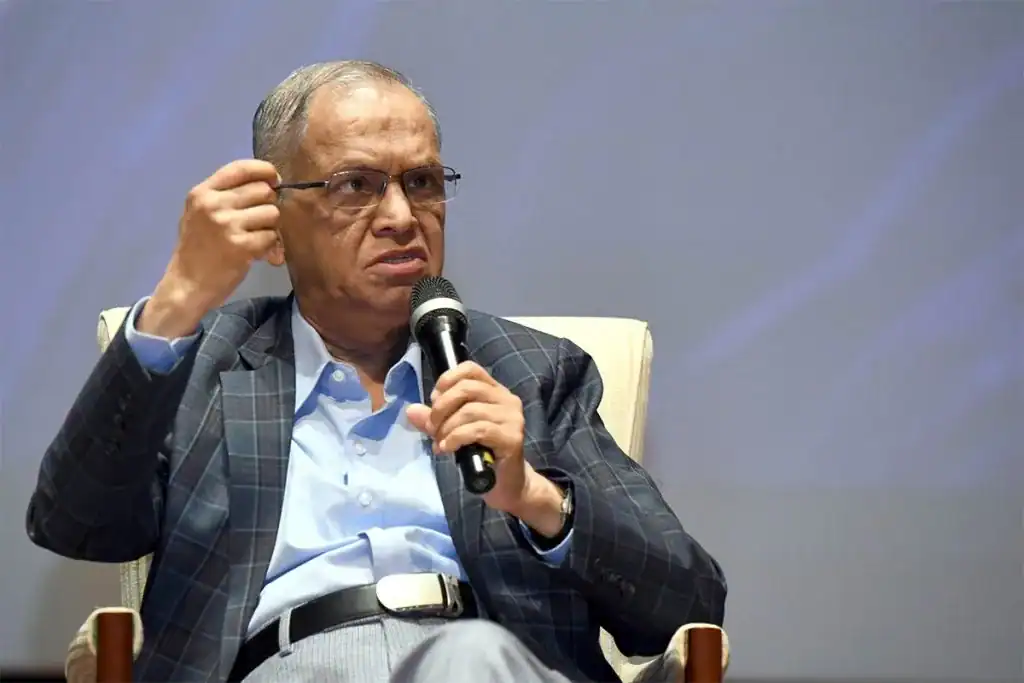When one of India’s most respected business icons speaks, it’s worth listening—especially when he’s challenging our most ambitious national aspirations. Infosys co-founder NR Narayana Murthy recently offered a sobering assessment of India’s potential to rival China’s economic might, and his message is clear: it’s possible, but the job won’t be easy.
Table of Contents
Narayan Murthy’s Economic Reality Gap
China’s GDP is approximately six times larger than India’s, with China standing at around $17 trillion compared to India’s $3 trillion economy. Speaking at the ELCIA Tech Summit 2024, Murthy highlighted that China has become “the factory of the world,” with about 90% of items in global supermarkets manufactured there.

Despite this stark disparity, Murthy remains cautiously optimistic. Given India’s reasonable economic growth of 6.57%, he believes catching up with China is possible—if the nation demonstrates extraordinary action across all sectors.
Explore more insights on India’s economic transformation journey and what it takes to build a competitive economy.
Narayan Murthy’s Three-Pillar Formula for Growth
| Growth Pillar | Key Requirements |
|---|---|
| Business Environment | Simplified regulations, reduced bureaucratic hurdles, hassle-free entrepreneurship |
| Disposable Income | Increased consumer spending power to stimulate economic activity |
| Job Creation | Millions of employment opportunities across sectors |
| Public Governance | Faster response time, transparency, accountability, and excellence |
| Work Culture | Hard work and discipline (referencing China’s 996 culture: 9am-9pm, 6 days/week) |
The Manufacturing Challenge
Murthy cautioned against using grandiose terms like “hub” and “vishwa guru” prematurely, emphasizing that while the IT sector thrives on exports, manufacturing relies heavily on domestic contribution and government support.
The real bottleneck? Public governance. Murthy stressed that response time, transparency, accountability, speed, and excellence in government operations still need significant improvement for India to compete globally.
For entrepreneurs looking to navigate these challenges, understanding India’s manufacturing landscape and policy reforms becomes crucial.
Learn more about India’s economic policies from the Ministry of Finance and NITI Aayog.

The Work Culture Debate
Murthy’s controversial stance on work-life balance has sparked nationwide discussions. He shared how Infosys executives visiting China discovered the “996” work culture—9am to 9pm, six days a week, totaling 72 hours weekly.
His philosophy? “First we should all get a life and then worry about work-life balance,” arguing that no individual, community, or country has ever progressed without hard work.
While this perspective divides opinion, it underscores Murthy’s belief that extraordinary results demand extraordinary effort from every citizen—bureaucrats, politicians, corporate leaders, and civil society members alike.
Why India Still Has Hope
Despite the challenges, Murthy’s vision isn’t pessimistic—it’s pragmatic. He believes that with great ideas backed by extraordinary action across every sector, India can achieve this goal.
The key differentiators for India include:
- Democratic advantage: Creating a business-friendly environment without authoritarian constraints
- English proficiency: A significant edge in global services and IT sectors
- Young workforce: A demographic dividend China no longer enjoys
- Innovation ecosystem: Growing startup culture and technological adoption
AI Won’t Replace Human Ingenuity
Addressing concerns about artificial intelligence, Murthy reassured that AI won’t replace designers and those implementing complex application systems, as the creativity and power of the human mind remain superior.
This confidence in human potential over technological replacement reflects his broader philosophy: India’s success depends not on shortcuts or silver bullets, but on sustained excellence and disciplined effort.
FAQs
Q: Is it realistic for India to match China’s economy in the near future?
According to Murthy, it’s possible but challenging. With China’s economy being six times larger, India needs sustained growth rates above 6.5% annually, coupled with significant reforms in public governance, business environment, and manufacturing policies. The timeline would likely span decades rather than years, requiring commitment across government, industry, and civil society. Track India’s economic progress through official data at Reserve Bank of India.
Q: What specific reforms does India need to compete with China in manufacturing?
Murthy emphasizes three critical areas: (1) Reducing bureaucratic hurdles and simplifying regulations to create a hassle-free environment for entrepreneurs, (2) Improving response time, transparency, and accountability in public governance, and (3) Increasing domestic investment and government support for manufacturing—unlike IT, which thrives on exports. Success requires minimizing government-industry interface friction while maintaining democratic values.








